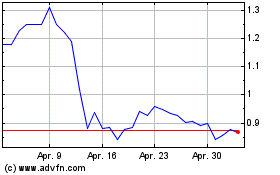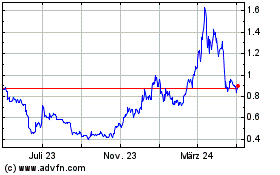Lightning Speed: Taro Is Here! Lightning Labs Releases The Code’s Alpha Version
29 September 2022 - 7:59AM
NEWSBTC
The controversial Taro protocol is ready for testing. The initial
version of the code is available on GitHub, and it enables
“developers to mint, send, and receive assets on the bitcoin
blockchain.” Notice that the company isn’t talking about the
Lightning Network yet. In a blog post announcing the Taro launch,
Lightning Labs promised, “Once the on-chain functionality is
complete, we’ll work towards integrating the Taro protocol into
lnd, bringing Taro assets to the Lightning Network.” This is the
first step of many and it’s mainly aimed at developers. According
to Lightning Labs, “this initial release is only designed for
testnet usage as a way for developers to start using the code.”
That means, no real value is flowing through Taro at the moment.
But… what is Taro anyway. The blog post defines it as a
“Taproot-powered protocol for issuing assets that can be
transferred over bitcoin and in the future, the Lightning Network
for instant, high volume, low fee transactions.” Taro Will Enable
Stablecoins To Travel Through Lightning This is a multifaceted
protocol that allows many things, but the feature everyone is
excited about is the fusion of stablecoins with the Lightning
Network. It’s controversial because you have to trust the issuer of
stablecoins, which means they come with counterparty risk. Bitcoin
doesn’t have that problem. In any case, in the subsection titled
“The First Step Towards Bitcoinizing the Dollar,” Lightning Labs
tries to convince us that stablecoins over Lightning are a good
idea: “With Taro and the incredible developer community, we can
build a world where users have USD-denominated balances and
BTC-denominated balances (or other assets) in the same wallet,
trivially sending value across the Lightning Network just as they
do today. This leap forward will accelerate the path to bringing
bitcoin to billions.” If that sounds too much like Galoy’s
stablesats, that’s because both implementations are trying to solve
the same problem. They use vastly different methods, though. And
place the counterparty risk in different places. BTC price chart
for 09/29/2022 on Fx | Source: BTC/USD on TradingView.com How Does
Taro Work And What Else Does It Do? Don’t worry, these brand-new
protocols are hard to master, or even understand. Luckily for us,
Lightning Labs gave us a technical-but-easy-to-understand
explanation as a refresher: “Taro assets are embedded within
existing bitcoin outputs, or UTXOs. Think of these assets as “UTXOs
within a UTXO.” A developer mints a new Taro asset by making an
on-chain transaction that commits to special metadata in a Tapoot
output. When minting a new asset, the Taro daemon will generate the
relevant witness data, assign the asset to a private key held by
the minter, and broadcast the newly created bitcoin UTXO to the
bitcoin network. This new outpoint becomes the genesis point of the
newly minted asset, acting as its unique identifier.” When
Lightning Speed first tackled the Taro subject, we explained what a
Taro asset can be: “What is a “Taro asset”? Whatever you want, your
BTC can be “converted into different assets such as USD to EUR or
USD to BTC.” Or, as Bitrefil’s Sergej Kotliar puts it, “Pay in
currency of sender’s choice, receive in currency of recipient’s
choice. This means that every wallet can now have native
Strike-type “USD balance” functionality for example. With no need
to trust the wallet, the only trust lies in the issuer of the
token.” How To Get Started With The Novel Protocol As previously
stated, this Alpha release is mainly for developers. If you’re one
or know of one, here are the protocol’s coordinates: “To get
started exploring Taro, download the daemon, check out the API
documentation, and read the getting started guide. And for a more
extensive explanation on how Taro works, take a deep dive into the
Taro BIPs and our documentation.” Have a blast, developers. And
please report back to us with your findings. Featured Image by
Jennyrang from Pixabay | Charts by TradingView
Flow (COIN:FLOWUSD)
Historical Stock Chart
Von Mär 2024 bis Apr 2024

Flow (COIN:FLOWUSD)
Historical Stock Chart
Von Apr 2023 bis Apr 2024
